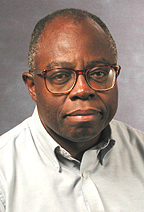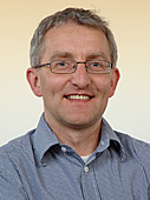KEYNOTES

Jerome Nriagu, Ph.D., D.Sc.
Professor, Environmental Health Sciences
Research Professor, Center for Human Growth and Development
University of Michigan, USA
Prof. Nriagu's research centers around three main issues: (i) sources, behavior, fate and effects of metals in the natural and contaminated environments; (ii) environmental justice and disproportionate exposure of communities to environmental pollutants; and (iii) environmental health problems in the developing countries. His work includes applied laboratory and field studies and has led to 30 books (authored/edited) and over 300 published articles. From 2000 to 2008, he was listed as one of the most cited scientists in the fields of Environmental Studies and Ecology (http://researchanalytics.thomsonreuters.com/highlycited/). He was the director of the Environmental Health Program from 1996 to 2006, and has been active in a number of community-based organizations. Before joining the University of Michigan, School of Public Health in 1993, he was a research scientist with Environment Canada, Burlington, Ontario.
Prof. Nriagu was the Editor-in-chief of the journal Science of the Total Environment (one of the leading environmental science journals), Editor-in-chief of Encyclopedia of Environmental Health (in five volumes) published in 2011, and the editor of book series published by Wiley-Interscience (New York), Elsevier Science (Amsterdam), and Maralte Publishers (Leiden). In 1987, he was awarded the first ever meritorious Doctor of Science degree by the University of Ibadan (Nigeria). Prof. Nriagu is a Fellow of the Royal Society of Canada. His other awards include Senior Fulbright Fellowship and distinguished Alexander von Humbolt Research Prize.

Prof. Robert Mason
Departments of Marine Science and Chemisty, Univerity of Connecticut, USA
Robert Mason has been a professor in the Departments of Marine Science and Chemistry at the University of Connecticut since 2005. He was a professor at the Chesapeake Biological Laboratory, part of the University of Maryland prior to this move (1994-2005) and also completed a post-doc at MIT (1992-94). He received his PhD in 1991 from the University of Connecticut and his MS from the University of Cape Town in South Africa (1983). His current research interests are directed at the fate, transport, and transformation of trace metals and metalloids, especially mercury, in aquatic systems and the atmosphere. The research includes studies of the open ocean, the coastal zone and estuaries, as well as freshwater systems with a focus on the important transformation processes, in the sediment, water and air, and at the interfaces (sediment/water and air/sea exchange), and how these impact bioavailability and bioaccumulation into aquatic organisms. Mason has more than 100 peer-reviewed publications, mostly focusing on mercury, including a number of highly cited papers (H-Index 57). He currently has 4 graduate students, and has graduated 7 PhD and 7 MS students. Current and prior funding has come from NSF, EPA, NIEHS, Sea Grant, State institutions, and non-profit organizations, as well as from industry. Mason has been involved in international efforts, such as the United Nations Environmental Program and the Hemispheric Transport of Air Pollutants initiative, to inform efforts to reduce mercury in the environment. He also helped produce a recent special issue on mercury in marine ecosystems (Environmental Research vol 199), and in the production of a special report on mercury in marine systems and an accompanying movie about health risks and benefits of fish consumption, entitled "Mercury: From Source to Seafood" (http://www.dartmouth.edu/~toxmetal/mercury-source-to-seafood/index.html).

Dr. Mark Cave
British Geological Survey, Notthingam, United Kingdom
Mark Cave is a principal scientist and manager of the Environment and Health Project at the British Geological Survey. He is an analytical chemist/geochemist with extensive experience in the analysis and interpretation of environmental chemical data with a recent MSc in Applied Statistics. He has at least 60 refereed external publications (h index = 17) and 80 internal BGS reports on analytical method development and data interpretation in environmental and health applications using multivariate statistical methods. He has developed a novel sequential extraction methodology for identification of the solid phase speciation of potentially harmful elements in soils and sediments using a chemometric modelling technique. He is chairman of BARGE (Bioaccessibility Research Group of Europe), working to develop harmonised protocols for bioaccessibility testing and the production of a soil reference material for in-vitro bioaccessibility measurements. He has wide experience in investigating the geological controls on the bioaccessibility of naturally occurring arsenic in the UK. Dr. Cave is a member of the Royal Society of Chemistry, Chartered Chemist and Chartered Scientist and a councilor on the committee of the International Medical Geology Association .

Prof. Dr. rer. nat. Andreas Kappler
Center for Applied Geosciences (ZAG), Eberhard-Karls University,Tübingen, Germany
Andreas Kappler did his PhD in environmental microbiology and microbial ecology at University of Konztanz (Germany). After a post-doc in environmental chemistry at the EAWAG/ETH in Switzerland (200-2002) and in geomicrobiology at CalTech, Pasadena, USA (2002-2004), he was appointed head of DFG-funded Emmy-Noether junior research group for geomicrobiology at University of Tübingen, where he holds his actual position of Professor in Geomicrobiology. His group focuses on the interactions of microorganisms and iron minerals in modern and ancient environments. Microbial iron-oxidizing and -reducing communities play a key role in iron-mineral formation and transformations and these minerals largely determine the fate of harmful organic and inorganic pollutants, including arsenic and chlorinated hydrocarbons. Studying both biological molecular mechanisms and geochemical conditions are crucial to the understanding of these biogeochemical processes. Therefore, his group combines field and lab work as well as microscopic, spectroscopic and molecular techniques with geochemical analyses in order to understand modern and ancient iron biogeochemistry and its environmental impact. His group currently has 15 PhD students and 4 postdocs, all third-party funded including funding from the DFG, ERC and NSF. He has published more than 90 papers (H-index 26). He is the recipient of an ERC starting grant "Microbial formation of minerals by communities of Fe(II)-oxidizing bacteria in modern and ancient environments" in 2012. He serves as Subject Editor for GEOBIOLOGY and as Associate Editor for PALAIOS.
|

